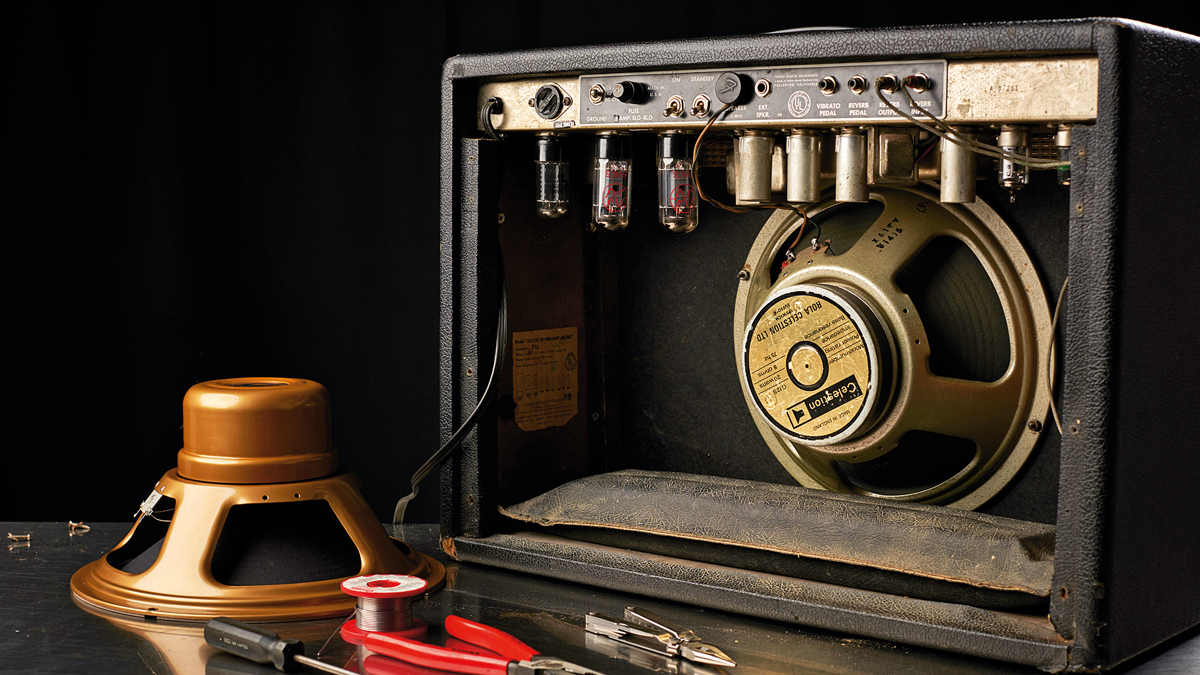
When it comes to electric guitar tone, there’s the big stuff and the small stuff. The former may include our choices of guitar and amplifier, while the latter includes valves, cables, pickups, plectrums and so forth. While every factor in the tone equation is undeniably important, guitarists often sweat the small stuff while failing to consider the big picture.
Given the enormous impact that guitar amp speakers have on guitar tone, it’s surprising how little consideration they’re given. Studio and hi-fi amps and speakers are designed to be sonically neutral, but if you’ve ever tried playing guitar through a hi-fi, you’ll know how dreadful it sounds.
Guitar speakers are non-linear lo-fi devices and their response is engineered to de-emphasise harsh high frequencies and roll off unnecessary bass. More importantly, though, they’re voiced to enhance and accentuate specific midrange frequencies. Meanwhile, guitar amps are non-linear and designed to distort, which adds even more complexity and character to guitar tones. And since there’s no theoretical ideal to shoot for, this means that all guitar speakers sound different.
How speakers work
Readers with sound-engineering experience might be aware that moving-coil dynamic microphones are effectively speakers operating in reverse. Sound waves cause an alternating current to be generated at the microphone’s output, whereas an alternating current at the speaker’s input (chassis terminals) causes the speaker cone to generate sound waves.
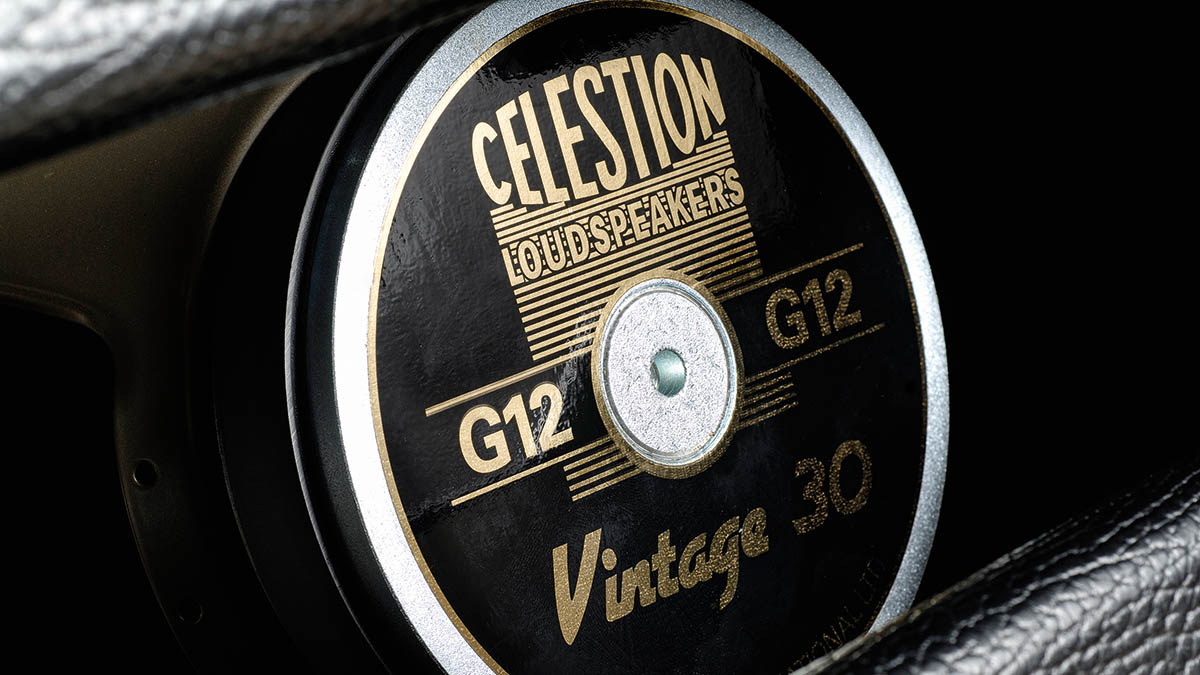
The cone is fixed around its outside edges and base to a solid metal frame called the basket. A wire coil that’s wound around a tubular former is attached to the centre of the cone and is inserted into a circular gap between the north and south poles of a magnet. A dust cap covers the assembly to keep the gap free of debris and the coil assembly ‘floats’ in the gap without touching the sides.
When an alternating current from an amplifier is connected to the wire coil, a fluctuating magnetic field is formed around the wire, which interacts with the fixed magnet. This causes the assembly to move backwards and forwards through electromagnetic induction.
Springiness around the outside edge of the cone and the flexible ‘spider’ membrane at the base allows it to move with the coil assembly. The cone creates areas of compression and rarefaction in adjacent air particles, much like the soundboard of an acoustic guitar. In other words, they both generate sound waves, but speakers are driven electronically rather than mechanically.
Get The Pick Newsletter
All the latest guitar news, interviews, lessons, reviews, deals and more, direct to your inbox!
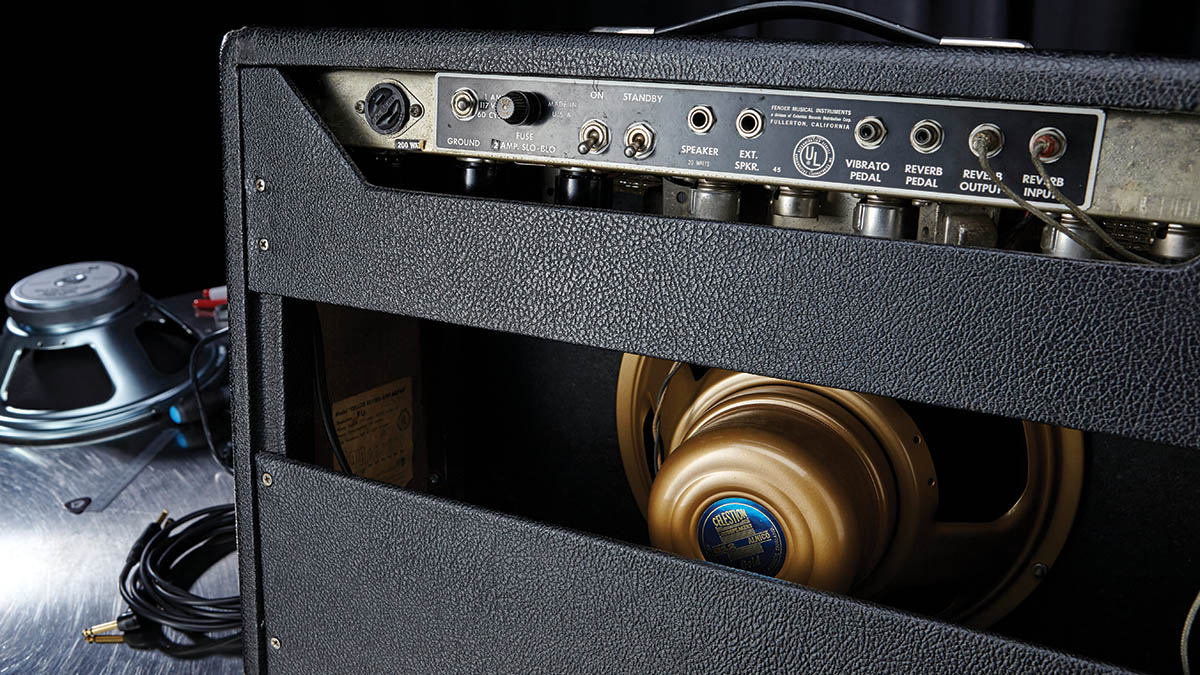
Power crazed
An amplifier’s power rating provides a rough indication of its loudness potential. In contrast, a speaker’s power rating merely indicates its power handling and tells us nothing about loudness. In practice, a speaker’s wattage is only needed for amplifier matching.
A cranked 100-watt amplifier will blow up any speaker rated lower than 100 watts, and the stiffer cone, increased damping and wider voice coil, that might enable a speaker to cope with 100 watts, could compromise the tone and dynamics of a 15-watt amplifier. The amp may feel stiff and unresponsive, much like a jumbo acoustic that’s equipped with a set of nine-gauge strings.
It’s safest to pair amps with speakers that have power handling somewhat higher than the amp’s power rating
Also, be aware that an amplifier’s transient peaks will always exceed the stated power. It’s safest to pair amps with speakers that have power handling somewhat higher than the amp’s power rating. Failure to do so can compromise tone, destroy the speaker and, in the worst-case scenario, result in significant damage to the amplifier itself.
This is one reason that high-power amps are usually paired with two or more lower-power speakers that together can handle the power without needing to be overbuilt. When driven hard, some guitar speakers compress and add a harmonic distortion that suits certain playing styles. The bass response may also become loose, which rootsy style players often like… but funk, country and heavy rock players mostly hate.
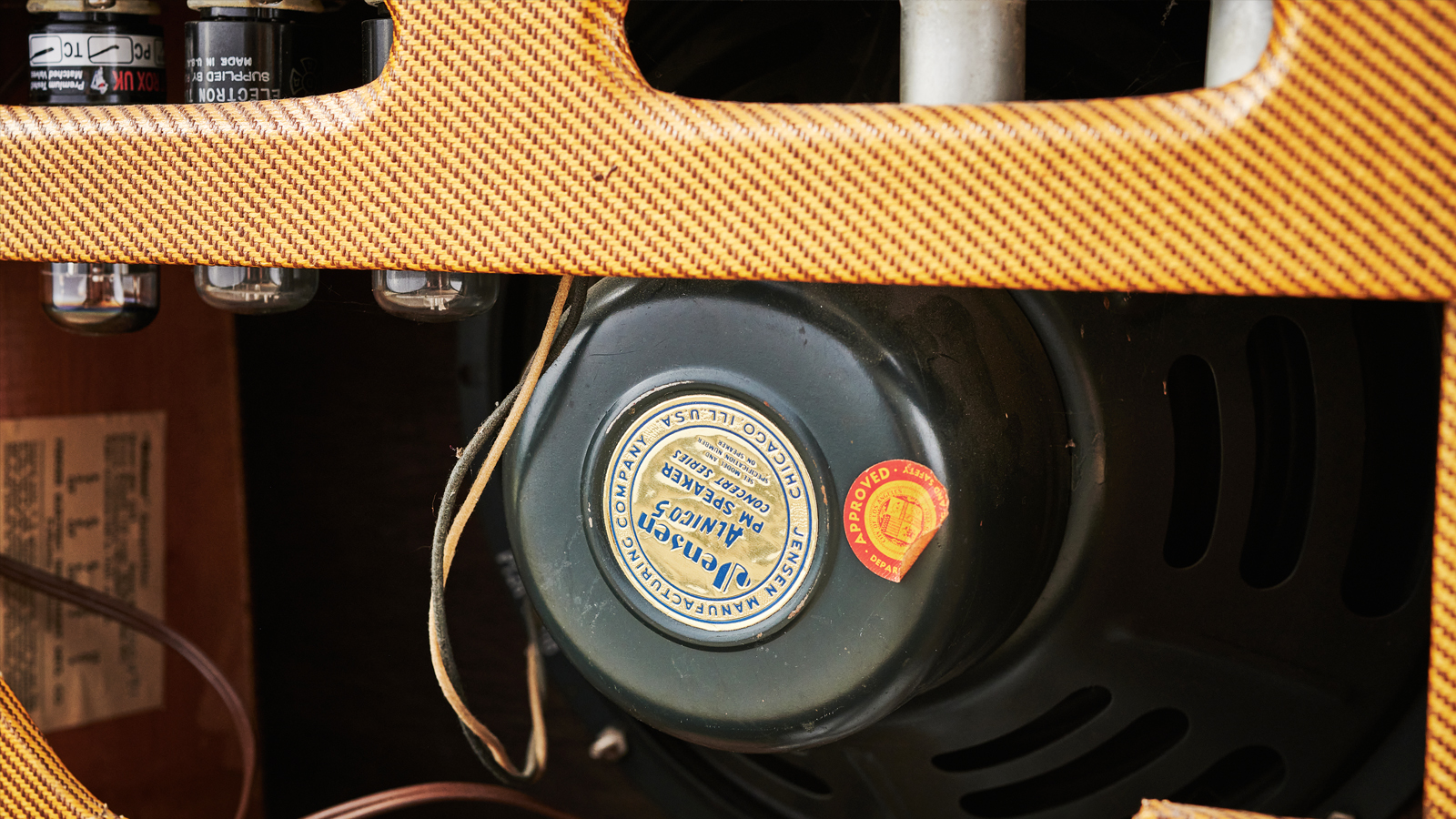
Sensitive souls
Speaker sensitivity is measured by feeding the speaker one watt and measuring the sound pressure level (SPL) at a distance of one metre. Sensitive speakers produce higher readings and will sound louder, with most guitar speakers measuring somewhere between 90dB and 103dB.
If you’re struggling to hear yourself, or need more clean headroom, find the sensitivity specs for your current speaker and replace it with one that’s more efficient
Factors that influence sensitivity include the mass of the cone, voice coil and former, plus the length of the coil and strength of the magnet. A low mass and strong magnet combination results in high sensitivity. Doubling an amplifier’s power results in a 3dB increase in volume, so replacing a speaker with one that’s 3dB more sensitive is tantamount to doubling your amp’s power.
If you’re struggling to hear yourself, or need more clean headroom, find the sensitivity specs for your current speaker and replace it with one that’s more efficient. You may not need a different amp after all. Conversely, if your amp is too loud when it’s operating at its sweet spot, less efficient speakers may allow you to crank it up without PA engineers and bandmates threatening to pull your plug.
Impedance
Since the voice coil is basically a wire-wound resistor, all speakers have a nominal load impedance rating that’s given in ohms. It’s nominal because the coil’s resistance is not consistent across all frequencies. Amplifiers have a fixed or selectable output impedance, and the speaker impedance should match the amp’s for optimum tone and amplifier safety.
Speakers can be combined in parallel or series, just like resistors. Two eight-ohm speakers wired in parallel present a four-ohm load, and wired in series they present a 16-ohm load. Similarly, two 16-ohm speakers combine in parallel for an eight-ohm load, and two four-ohm speakers in series present eight ohms.
Resonant speaking
Every speaker has a natural resonant frequency that strongly influences its voicing. This resonance is a function of the mass of the moving parts, the stiffness of the suspension and the resonance frequency of the cone.
Bass speakers will have a lower resonant frequency than guitar speakers, and some guitarists prefer them for a deeper and warmer tone with less upper midrange aggression. A lower resonant frequency is also desirable for drop tunings.
If better focused and less boomy lows are what you need, then a higher resonant frequency speaker will tighten the bass and emphasise the midrange. Wider diameter 15-inch and 12-inch speakers tend to have a lower resonant frequency than 10-inch and eight-inch speakers, but cabinet design also has an influence.
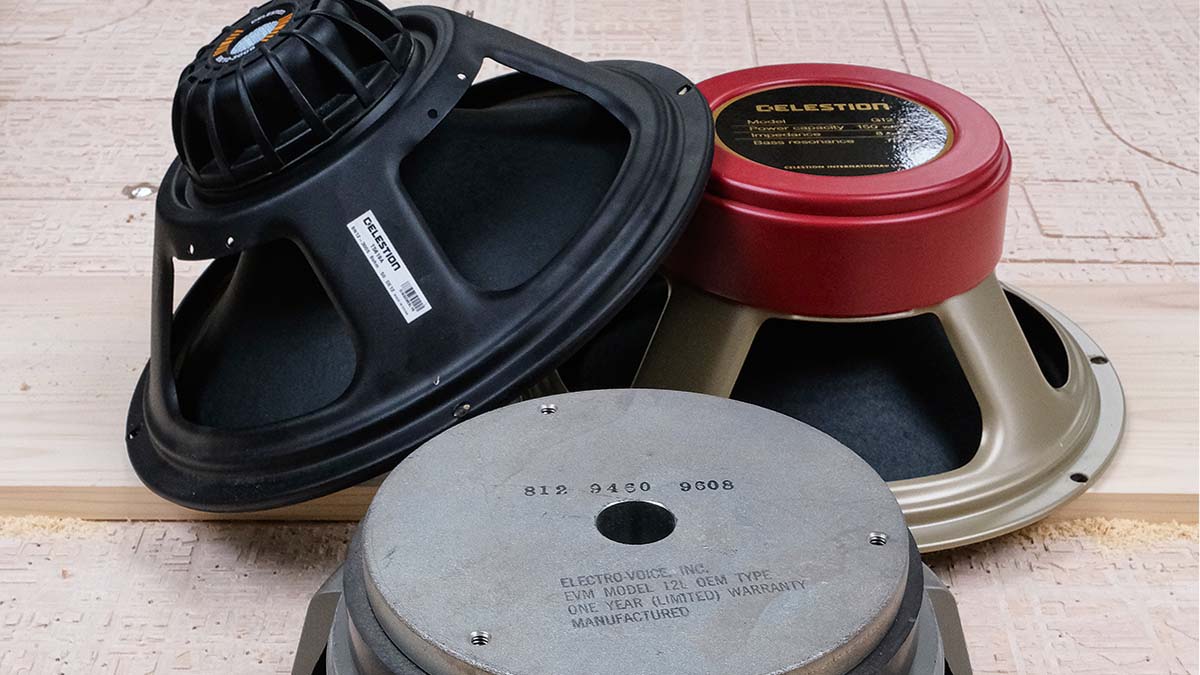
Cone craft
The majority of guitar speaker cones are made from paper pulp, but some are made from hemp and aluminium. Early guitar speaker cones are often smooth and thin, so they lack rigidity and tend to break up quickly with a loose bass response.
If you like raw blues and early electric jazz tones, smooth cone speakers are worth trying. As amps became more powerful, speaker manufacturers moulded ribs into the cones to add stiffness without adding weight. This reduces their tendency to break up and tightens up the bass response.
Doping also lowers the resonance peak at the upper cut-off frequency, which makes a speaker less chimey and complex. But with high-gain and high-power amps, there is less chance of harshness
Manufacturers also began ‘doping’ the outer edges of the cone with a silicon substance to limit the extent of movement and prevent tearing. This further tightens the bass and dampens unpleasant mechanically generated harmonic overtones called ‘cone cry’ or ‘edge yowl’.
Doping also lowers the resonance peak at the upper cut-off frequency, which makes a speaker less chimey and complex. But with high-gain and high-power amps, there is less chance of harshness.
If you play metal or heavier styles of rock, doped speakers with stiff cones are usually the way to go. Some speaker manufacturers disclose the amount of doping used, or allow customers to choose, so consider this when buying.
Magnets
Early speakers had electromagnets rather than permanent magnets, where the magnetic field was created using a wire coil. Placed in the power supply, this ‘field coil’ doubled up as a choke to filter the power supply. They are rare in guitar amps, but Fender used a 15-inch field coil Jensen speaker in the earliest tweed Pros.
Everything changed when Alnico permanent magnets became widely available. Alnico is an alloy of aluminium, nickel and cobalt, and it was used for all the P series Jensens, the original Celestion G12 that was installed in Clapton’s Marshall Bluesbreaker combo, and the Celestion Blue that featured in the Vox AC15 and AC30.
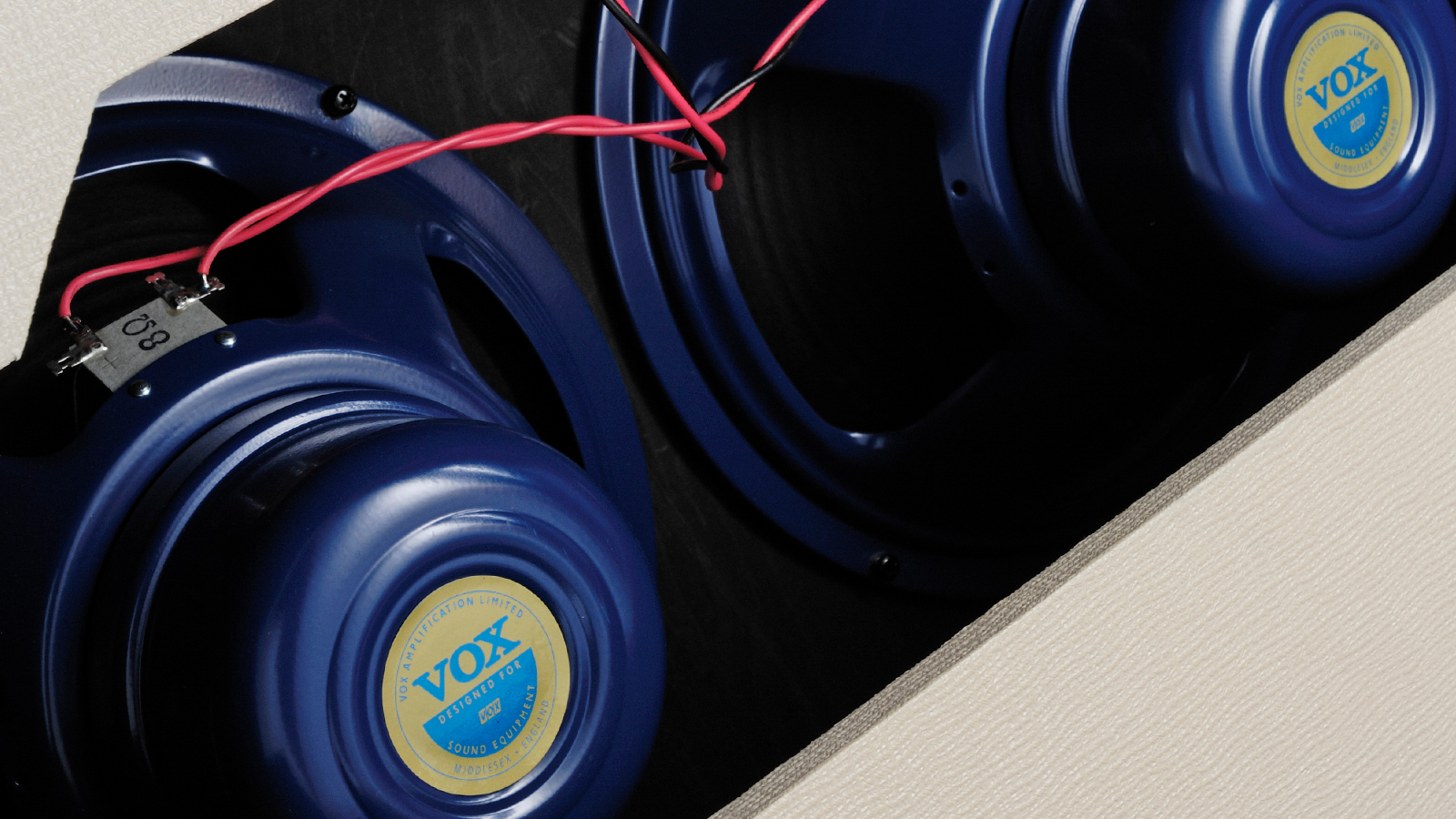
Due to increasing demand for cobalt for military applications, the cost of Alnico magnets increased and speaker manufacturers began using ceramic magnets instead. Classic examples include Jensen C series models, Celestion Greenbacks, JBLs and the Fane Crescendo.
Neodymium rare earth magnets have been around since 1984 and boast the highest magnetic strength to weight ratio. Many highly rated guitar speakers feature neodymium magnets, and they certainly help to keep weight to a minimum.
Alnico speakers often display chime, harmonically complex highs and soft bass, along with an ability to open up darker-sounding amps
Attributing sonic characteristics to magnet types is problematic because so much depends on other elements such as doping, the cone structure and the coil assembly. Even so, Alnico speakers often display chime, harmonically complex highs and soft bass, along with an ability to open up darker-sounding amps.
Ceramic speakers can display tighter and punchier lows, with a forward and gritty upper midrange, and slightly attenuated highs that can sweeten the edgier artefacts of high-gain amps. Neodymium magnets can have sonic characteristics of both Alnico and ceramic, and they can produce a very clear tone with a lively dynamic response.
Speaking out
We hope this has given you some insights into the factors that influence speaker loudness and power handling, as well as tone. Remember, if you buy a set of pickups, only one of your guitars will benefit. If you upgrade your speaker, all your guitars will sound better. Food for thought, maybe?
Huw started out in recording studios, working as a sound engineer and producer for David Bowie, Primal Scream, Ian Dury, Fad Gadget, My Bloody Valentine, Cardinal Black and many others. His book, Recording Guitar & Bass, was published in 2002 and a freelance career in journalism soon followed. He has written reviews, interviews, workshop and technical articles for Guitarist, Guitar Magazine, Guitar Player, Acoustic Magazine, Guitar Buyer and Music Tech. He has also contributed to several books, including The Tube Amp Book by Aspen Pittman. Huw builds and maintains guitars and amplifiers for clients, and specializes in vintage restoration. He provides consultancy services for equipment manufacturers and can, occasionally, be lured back into the studio.










